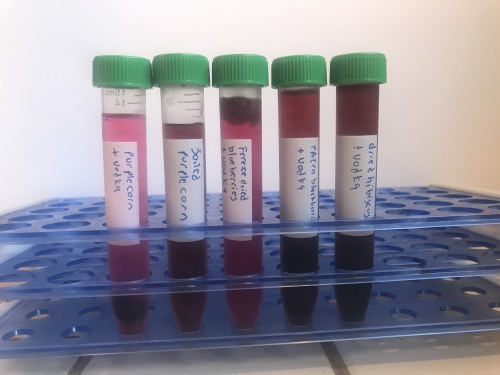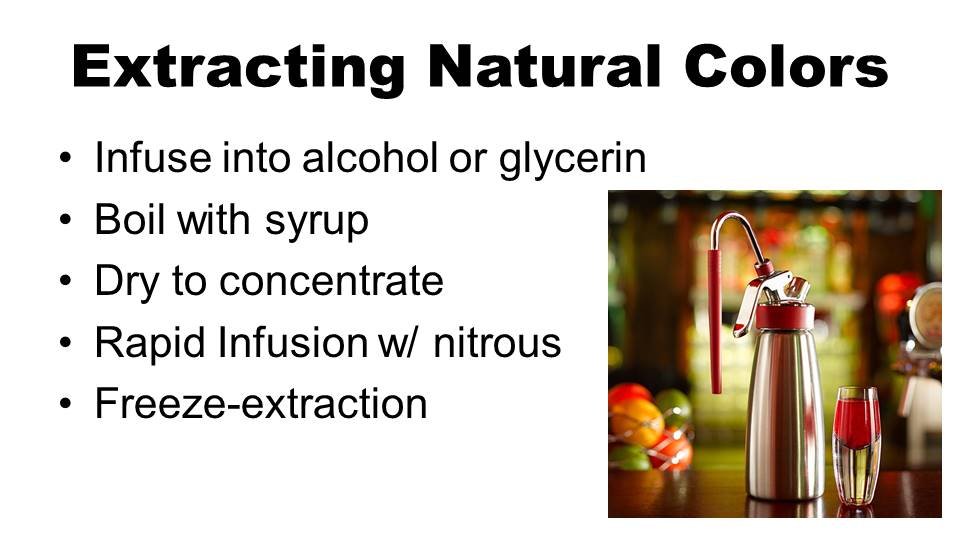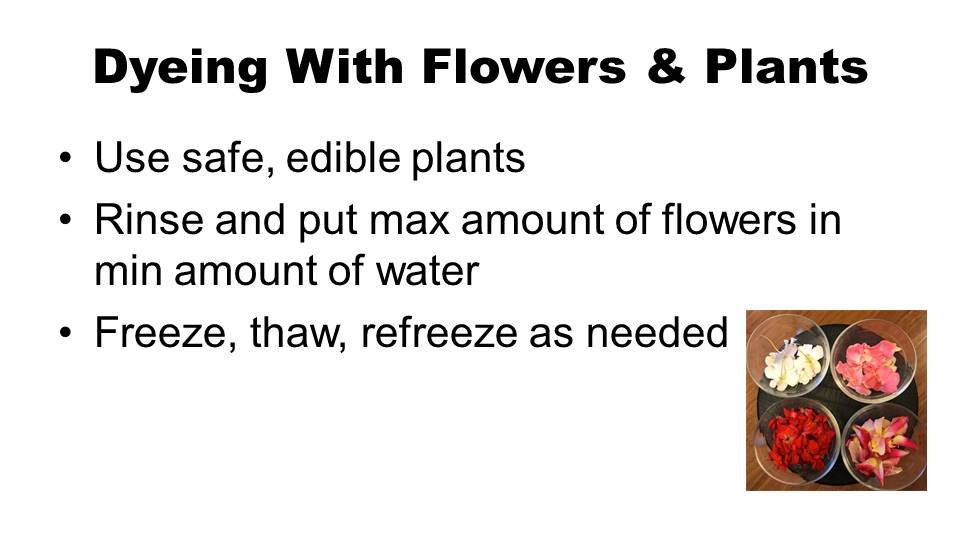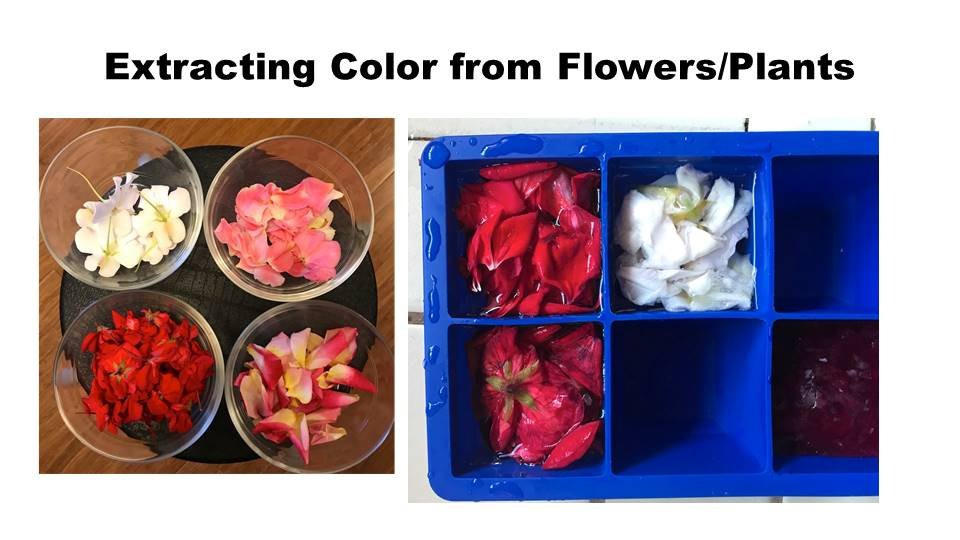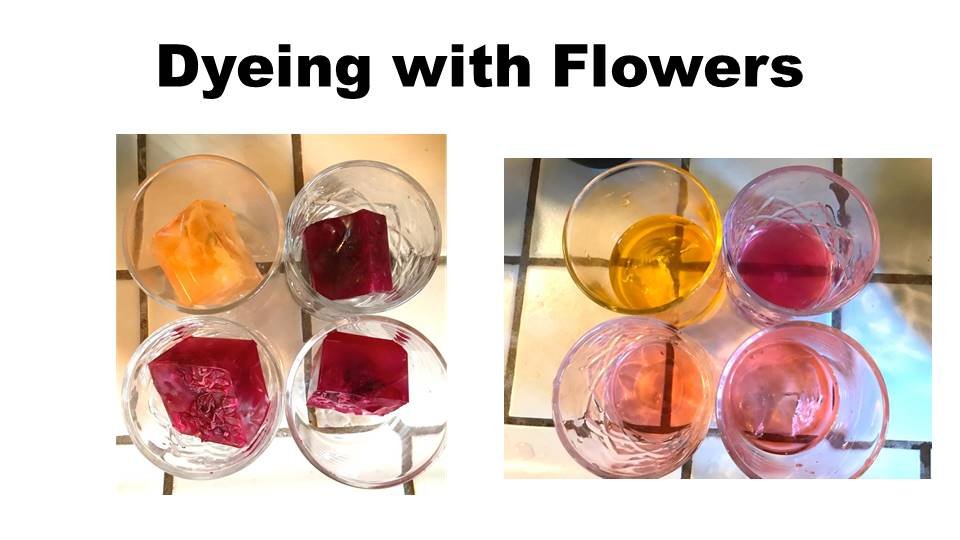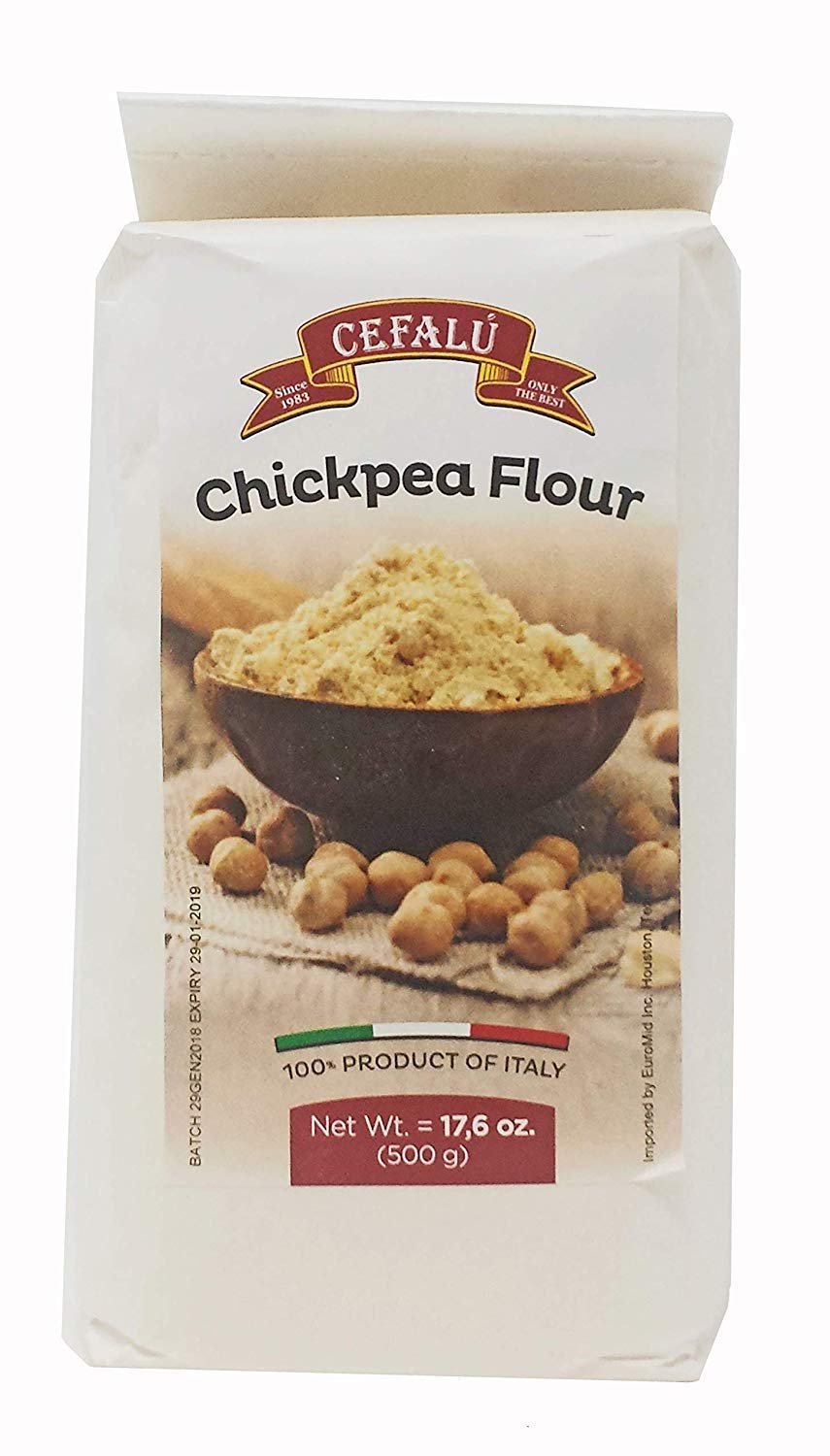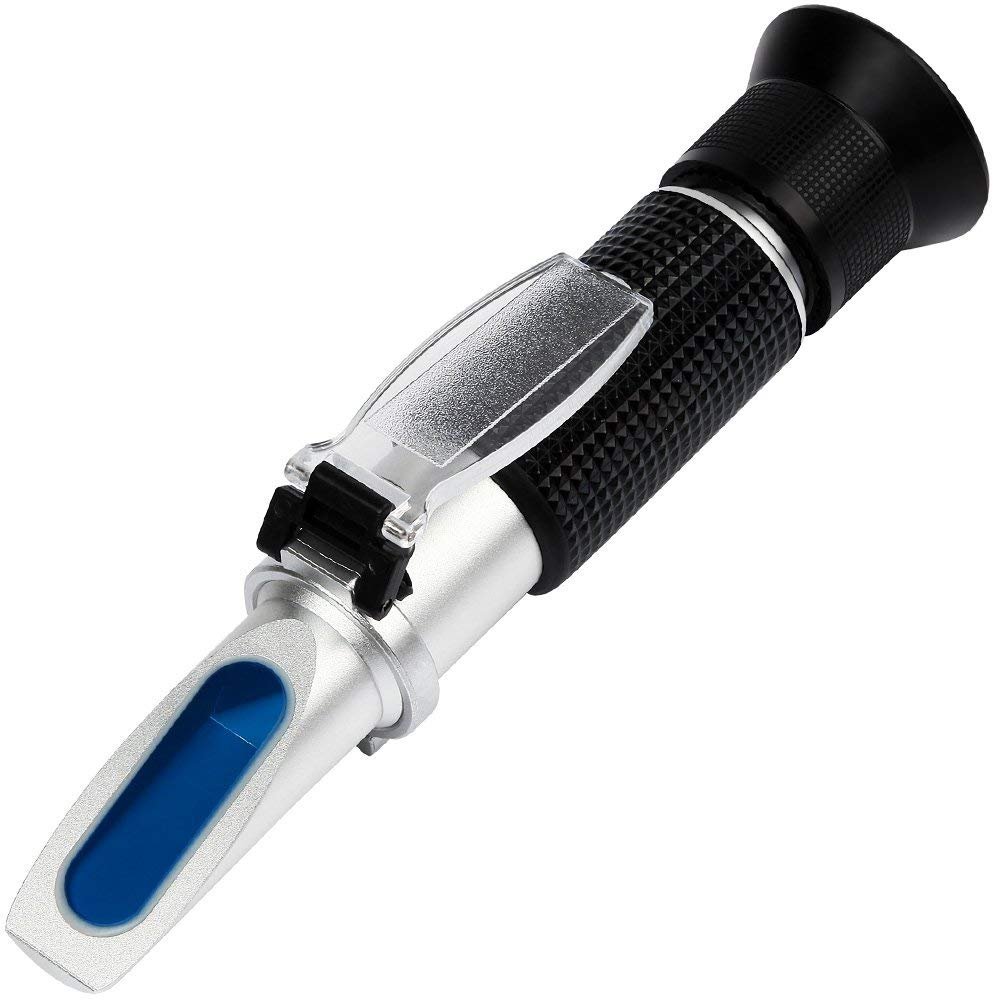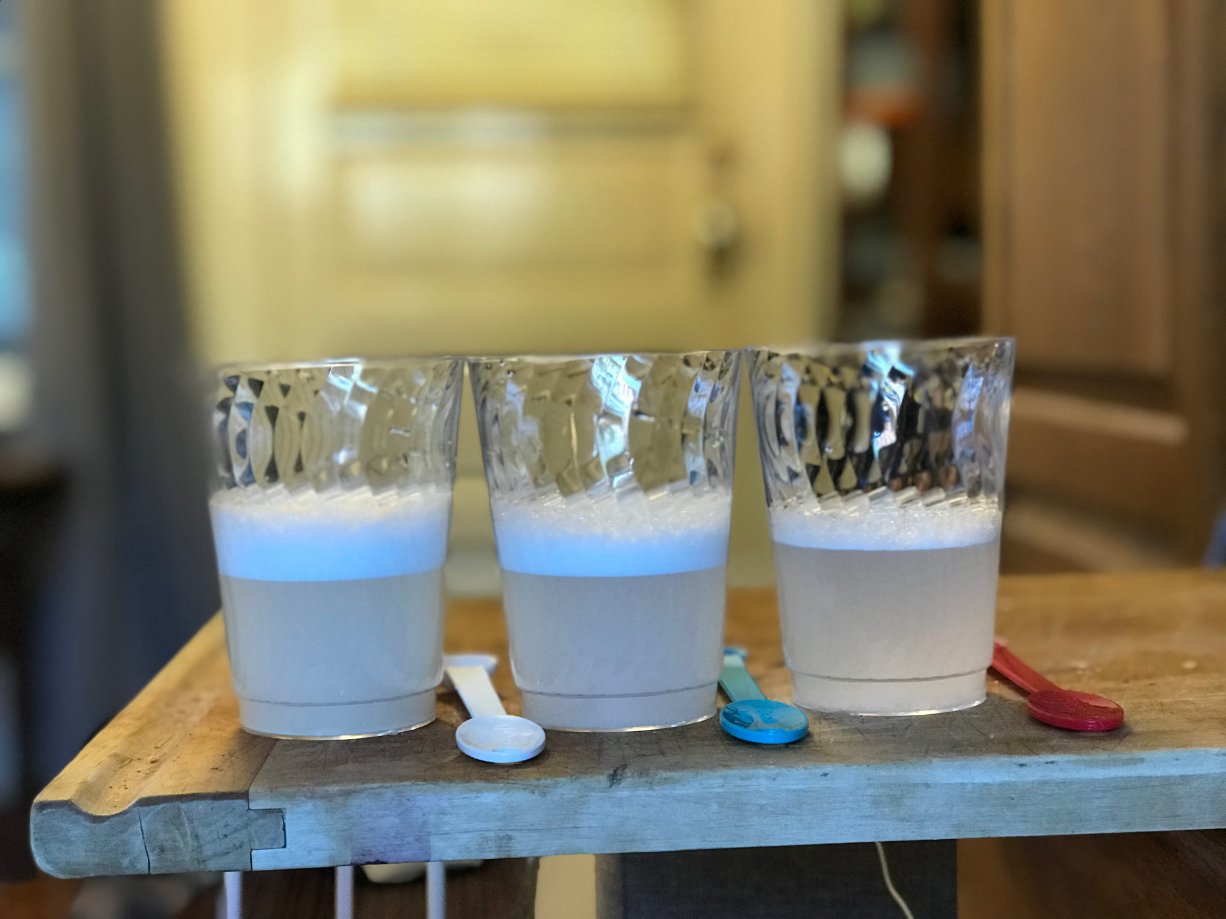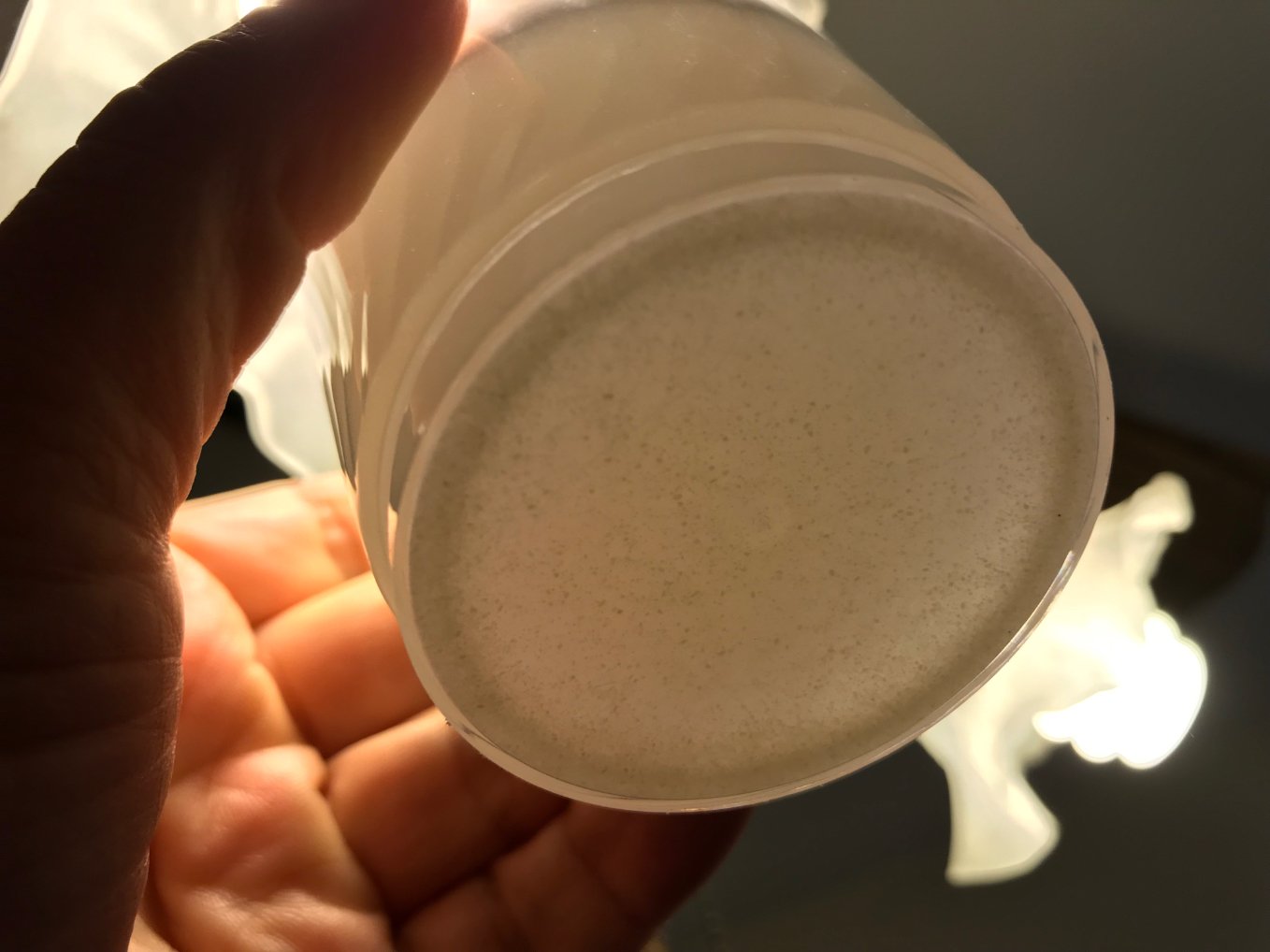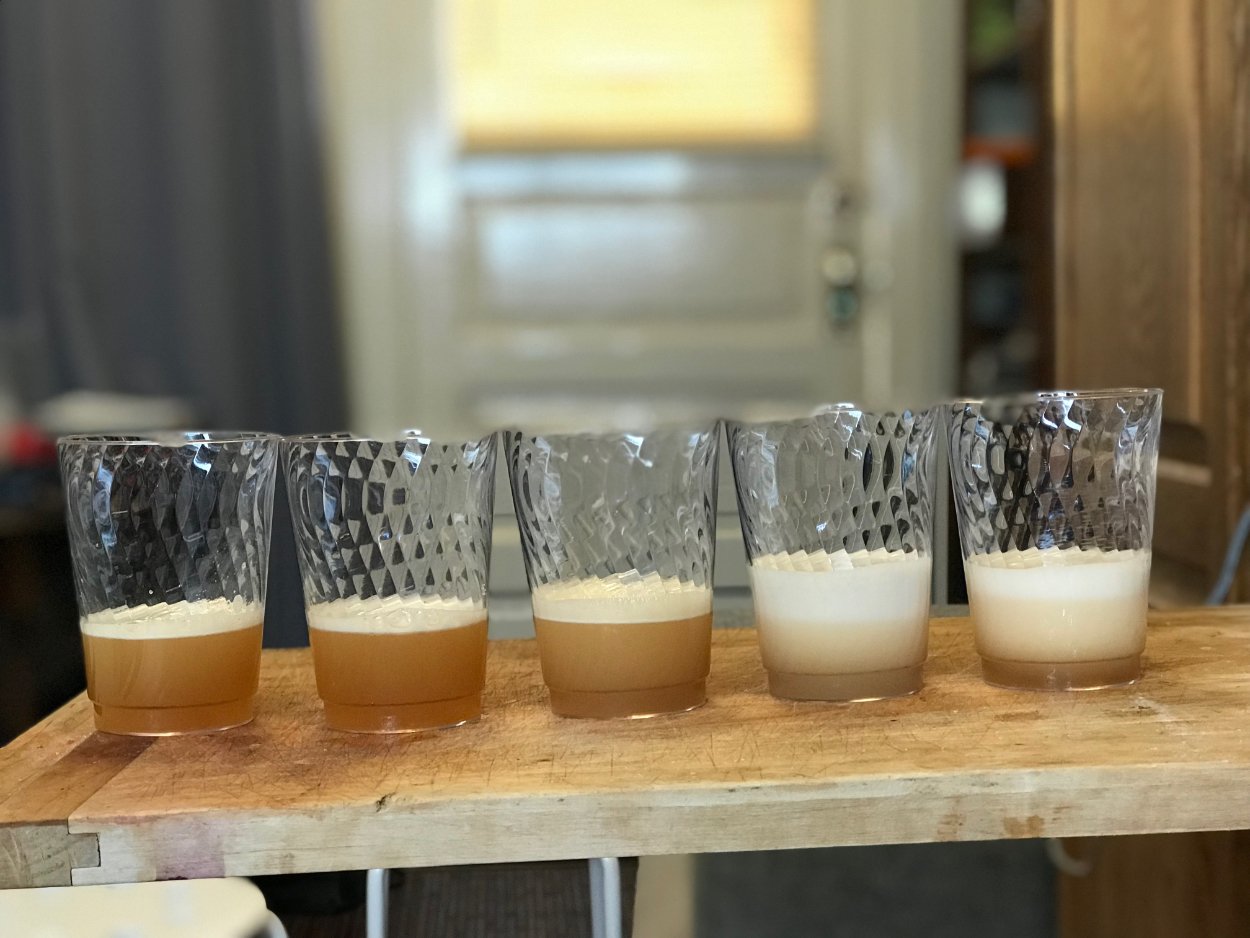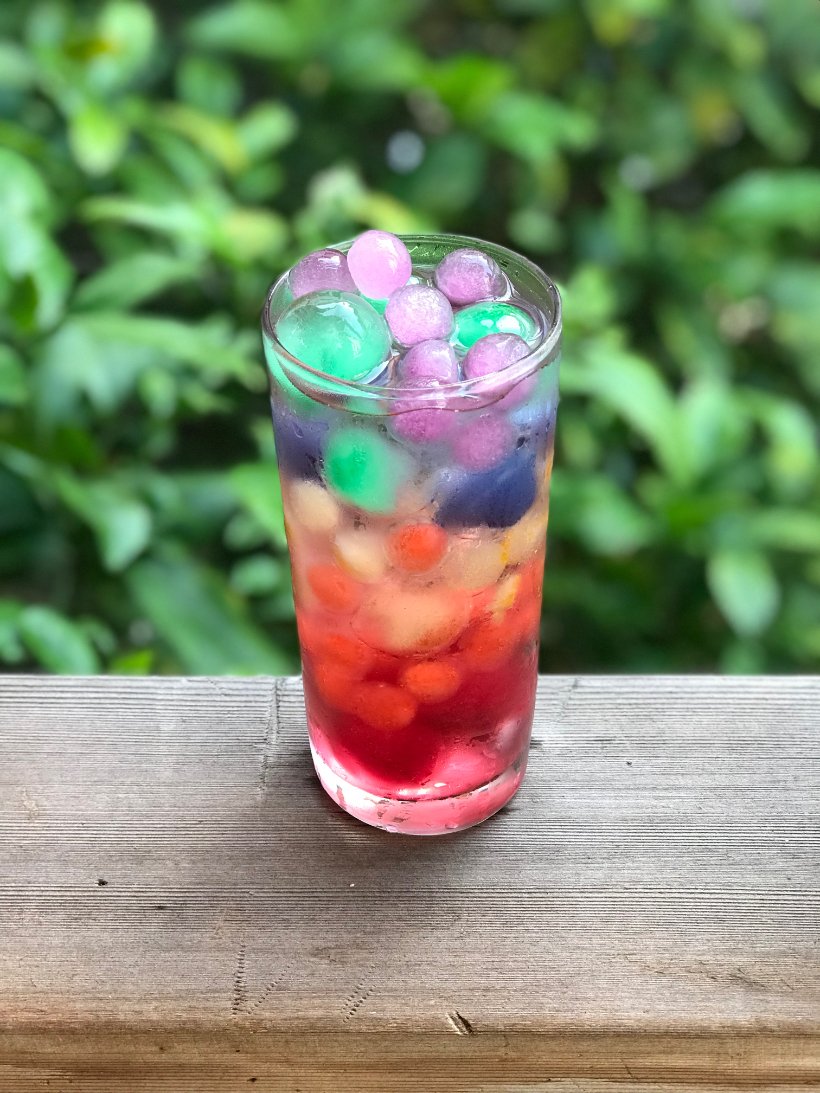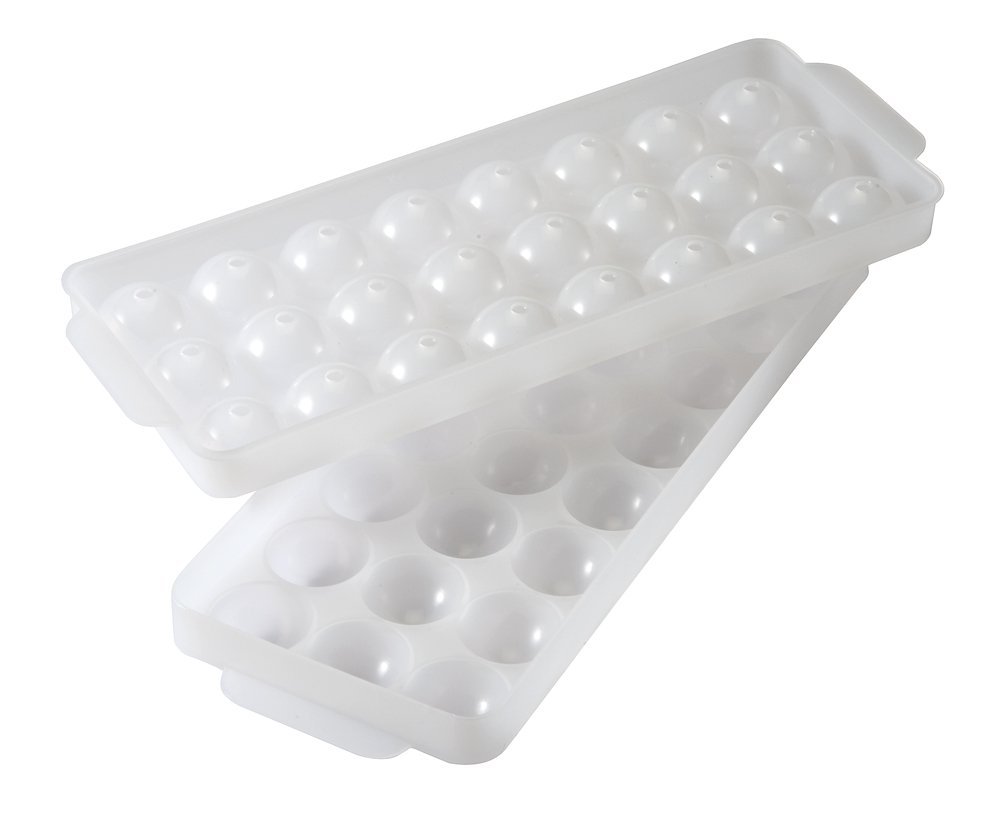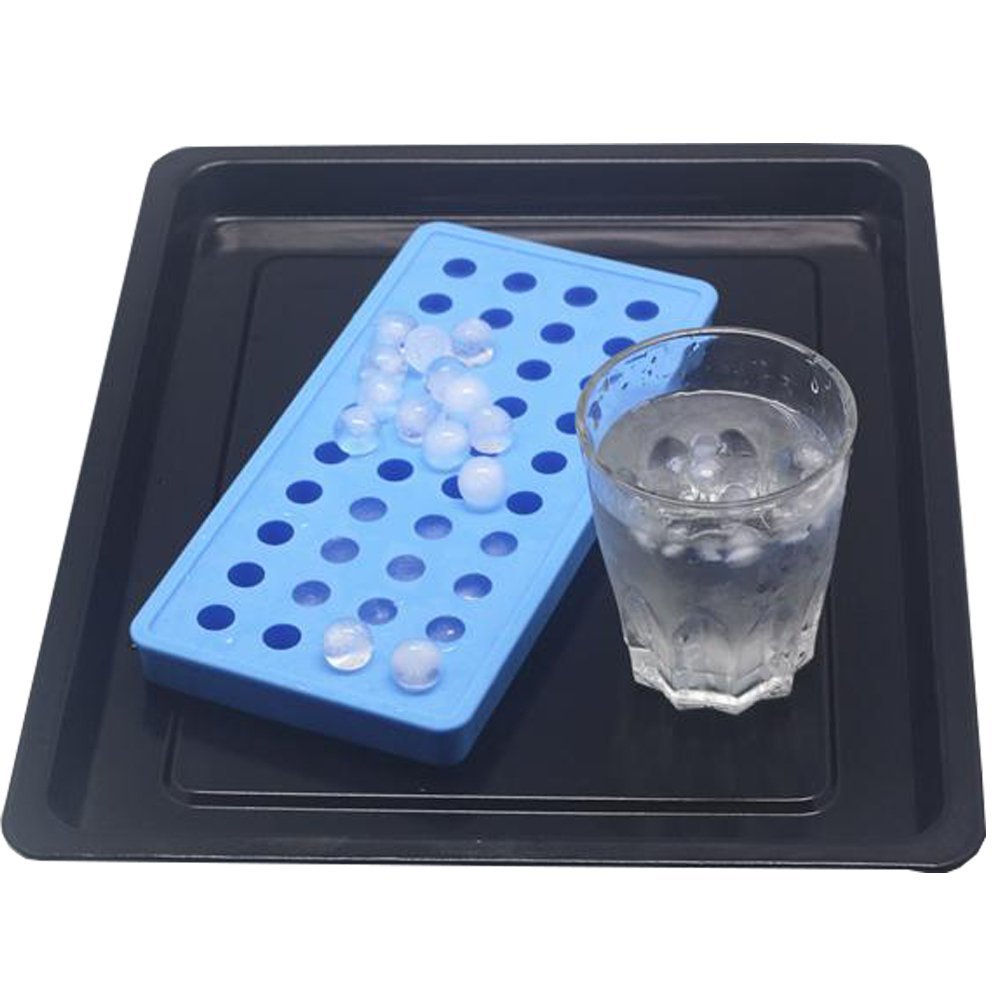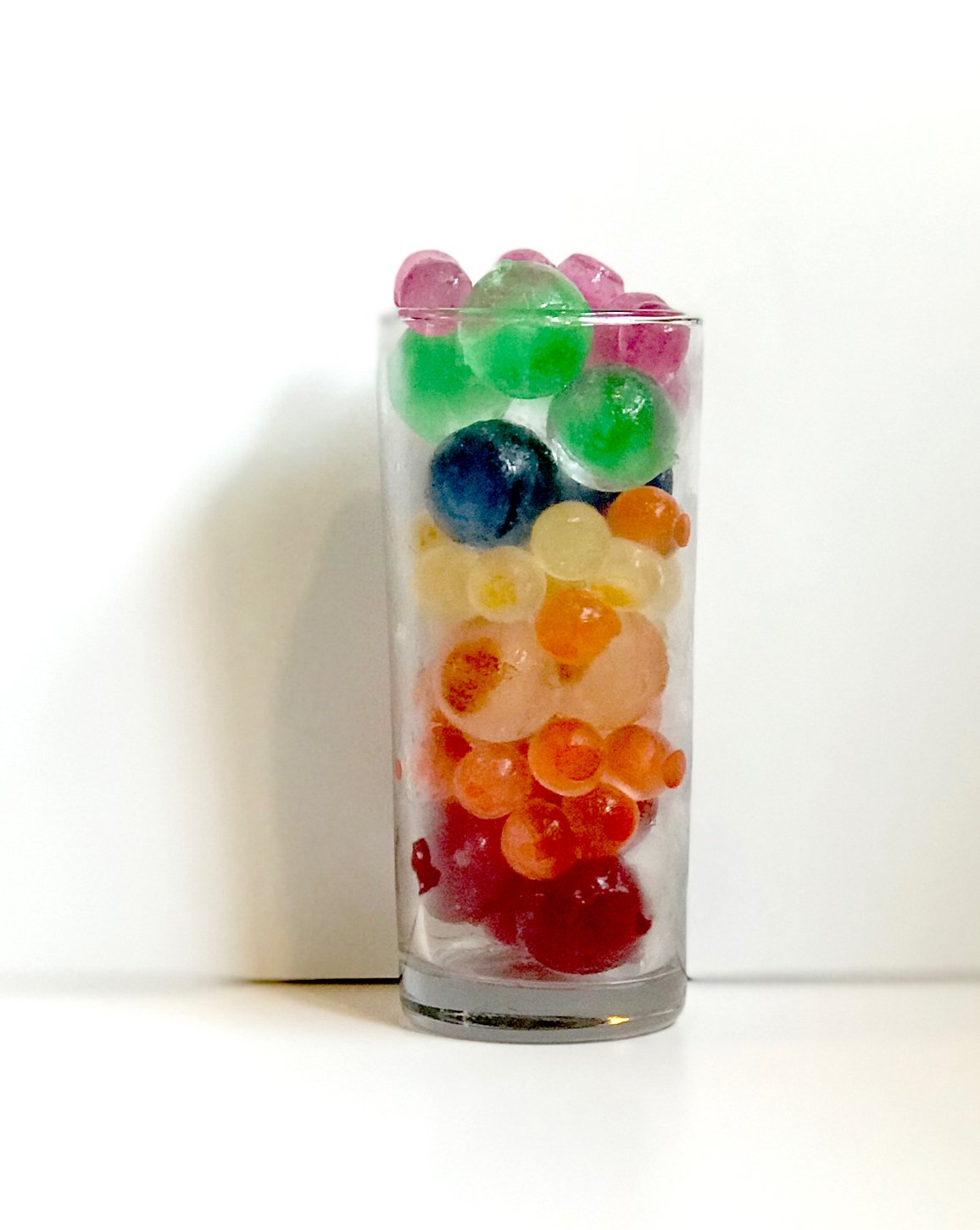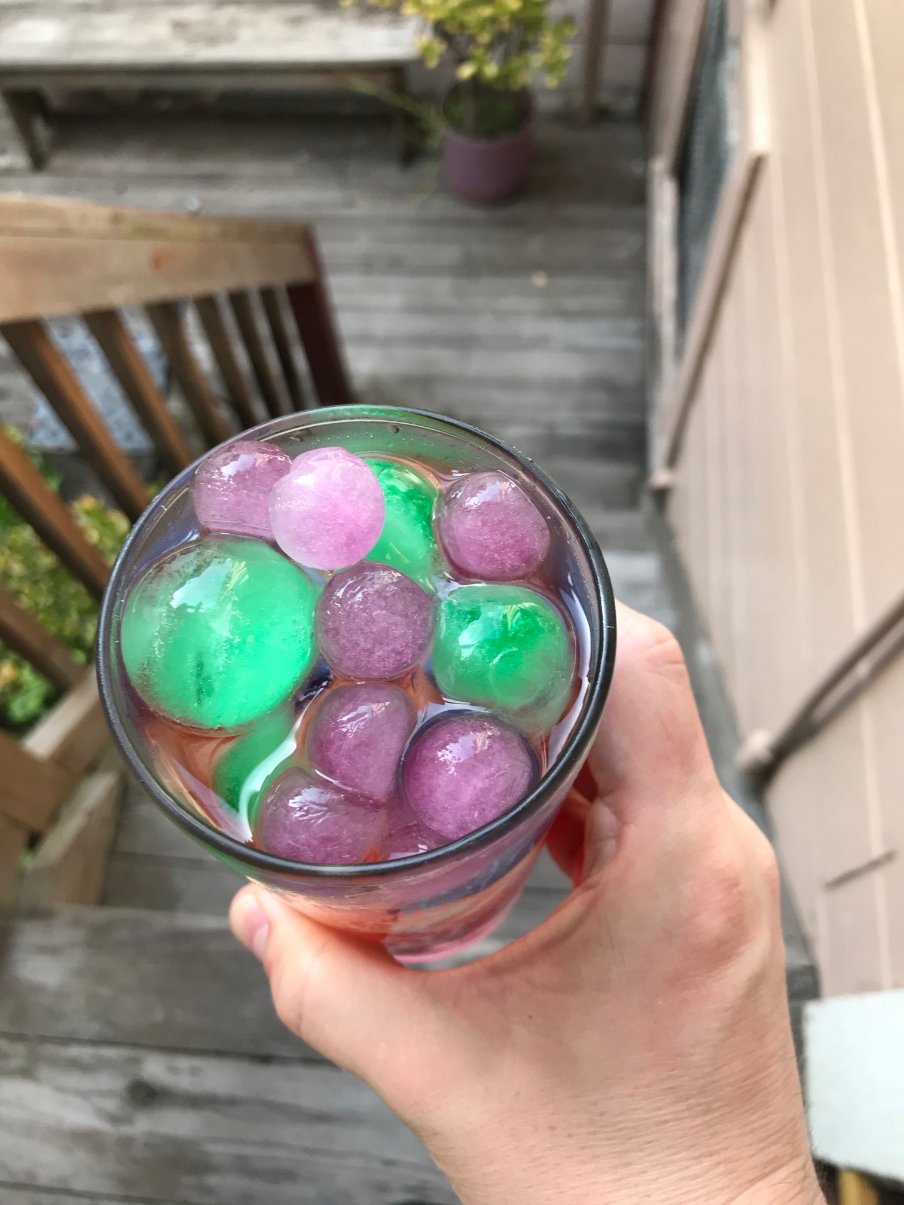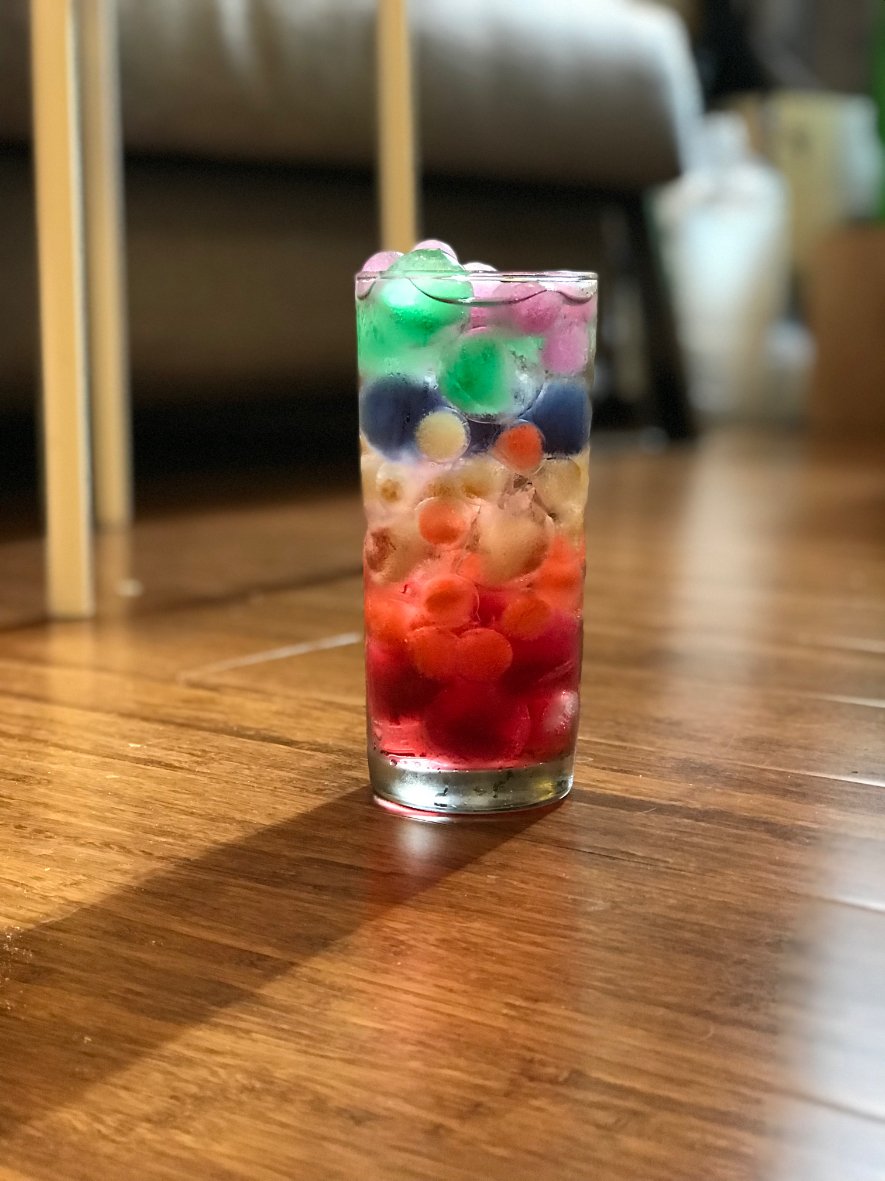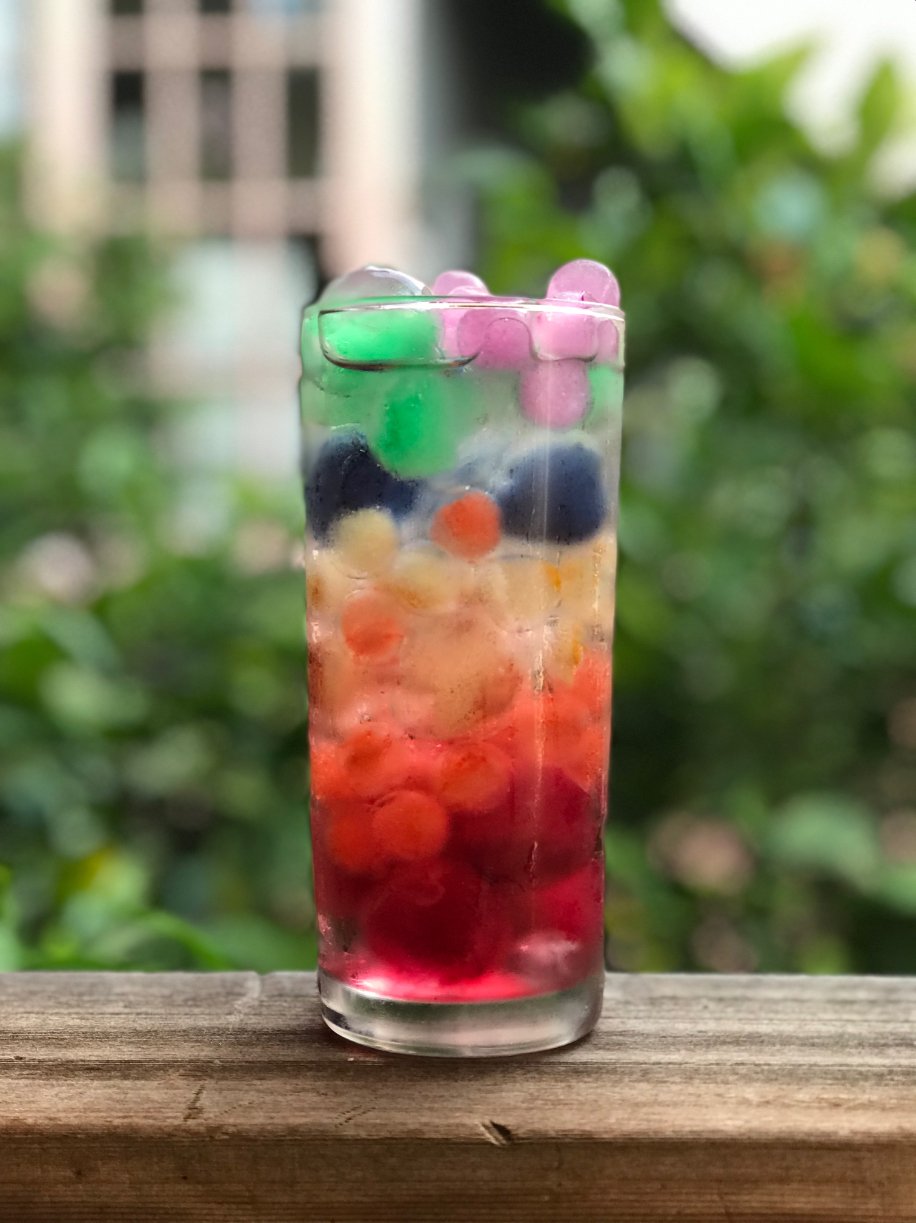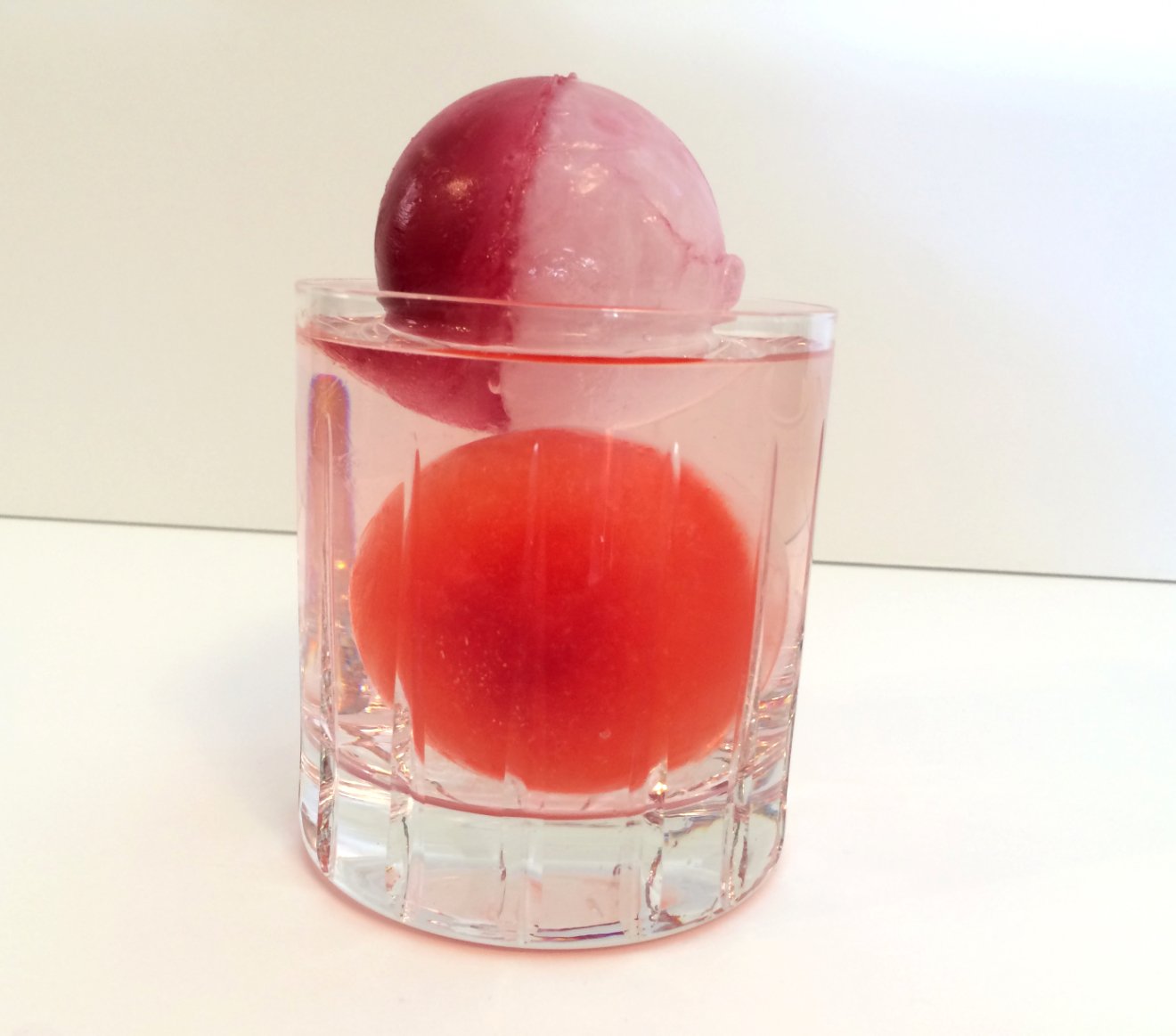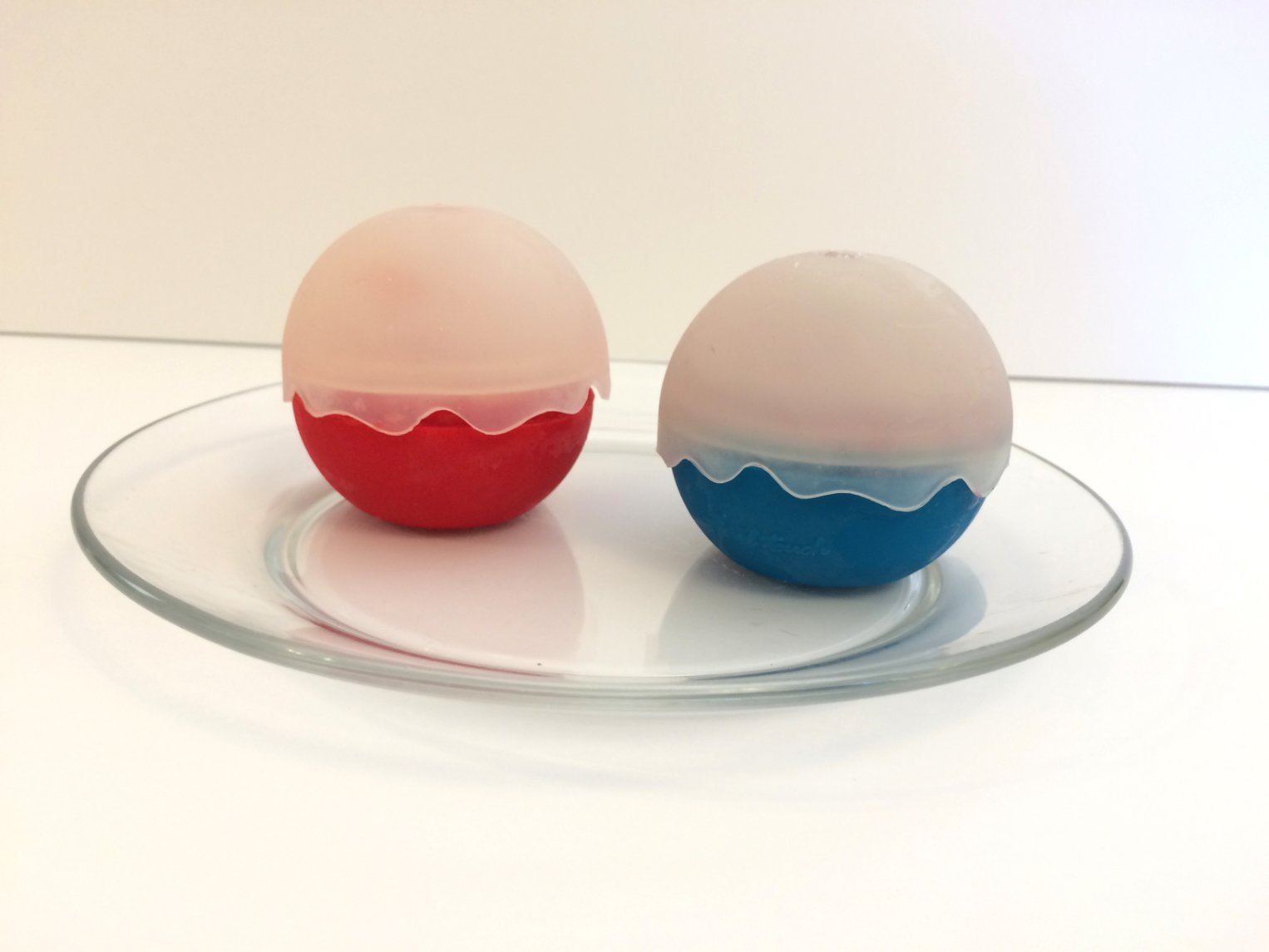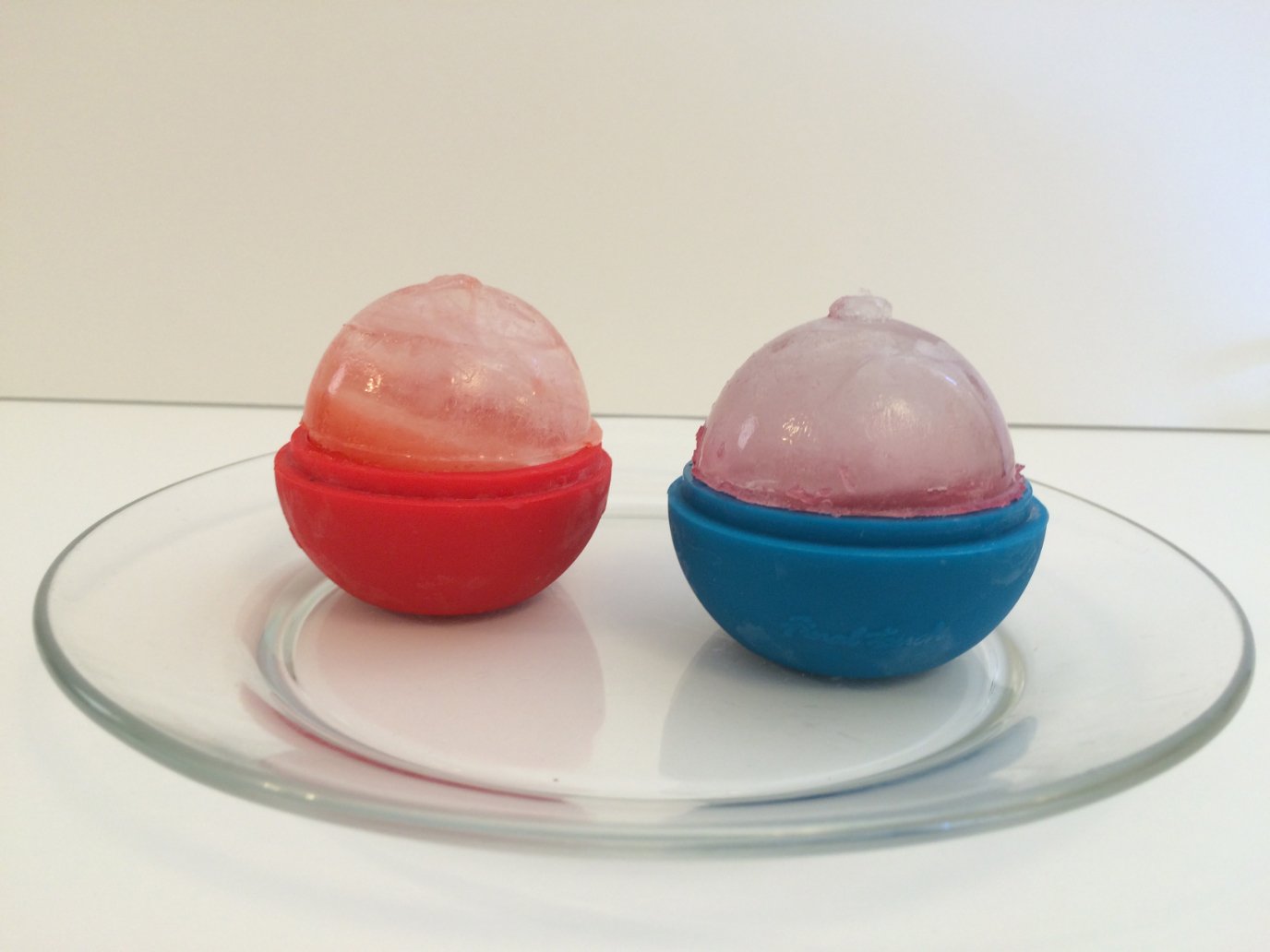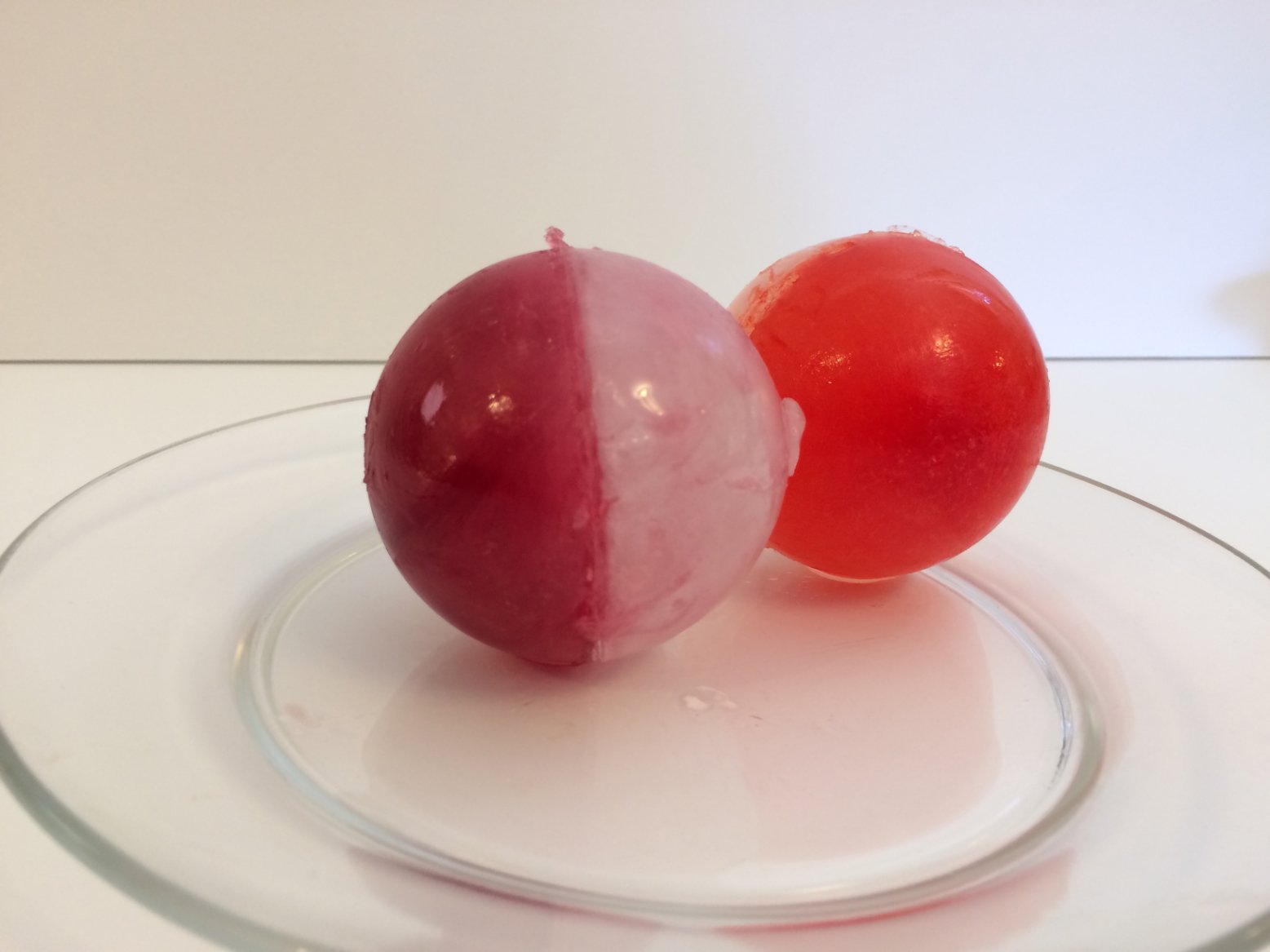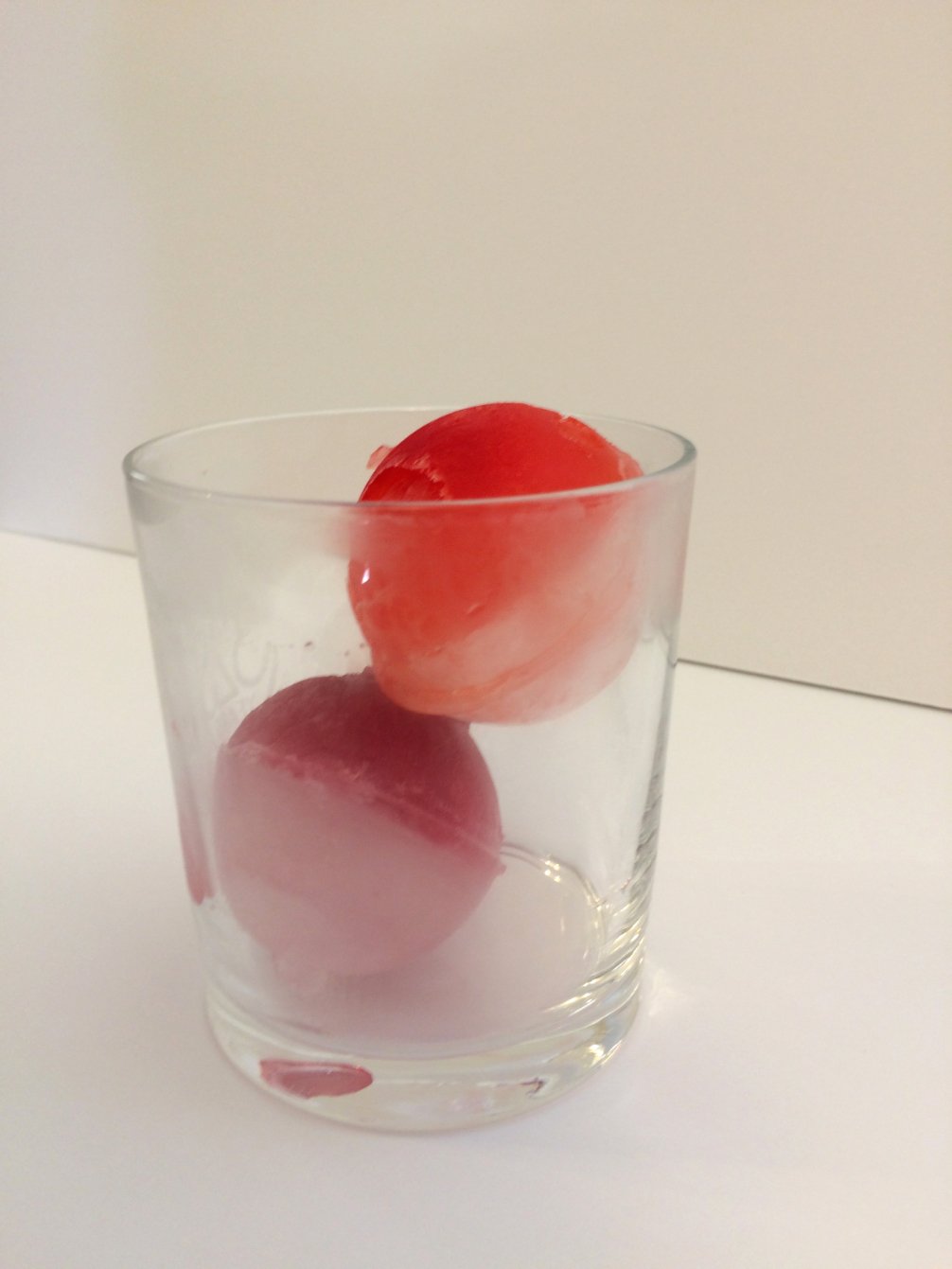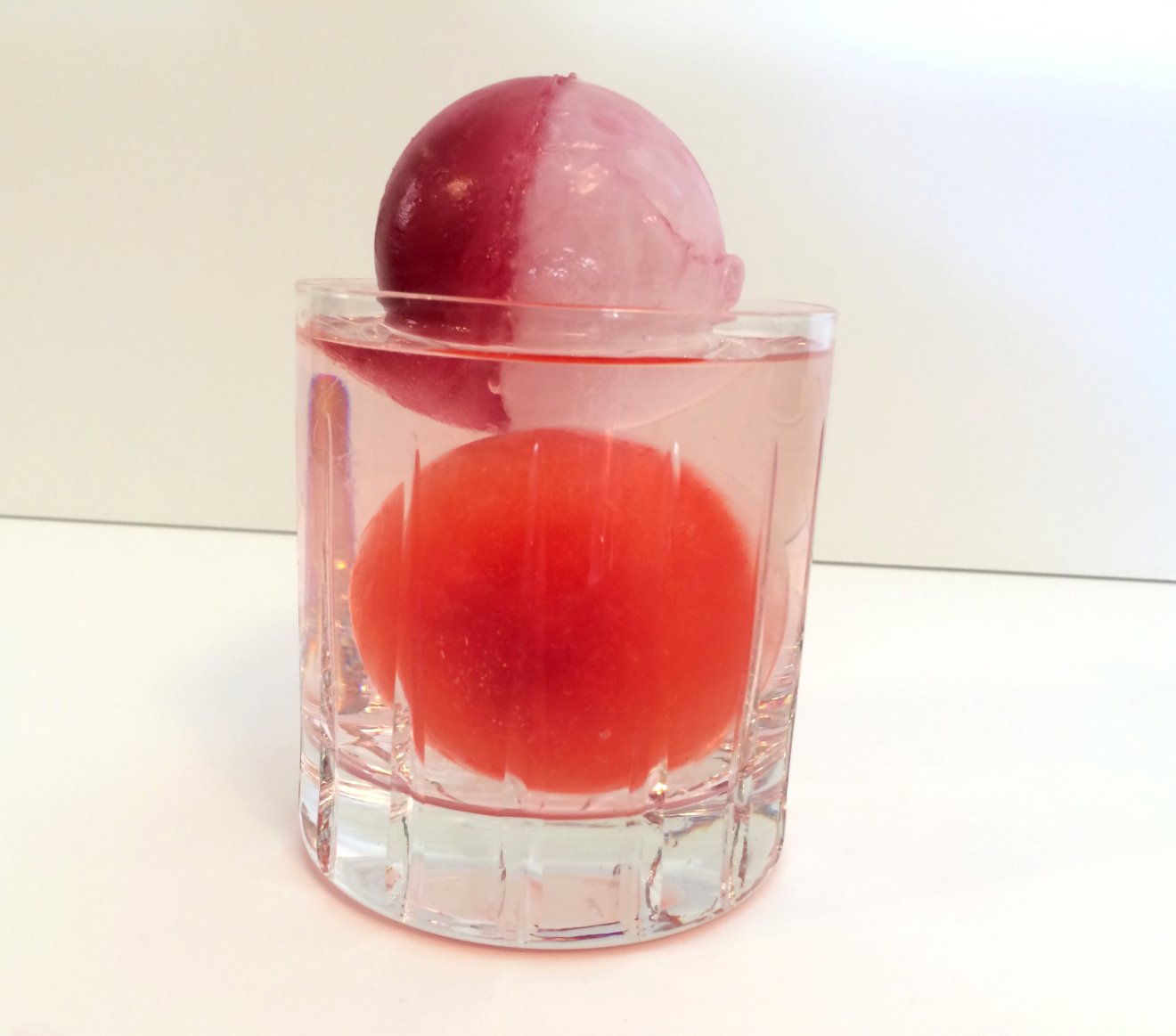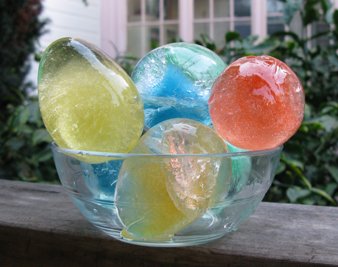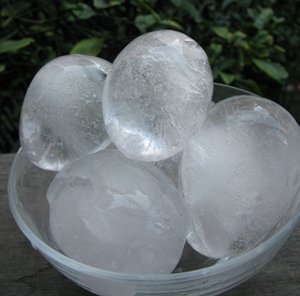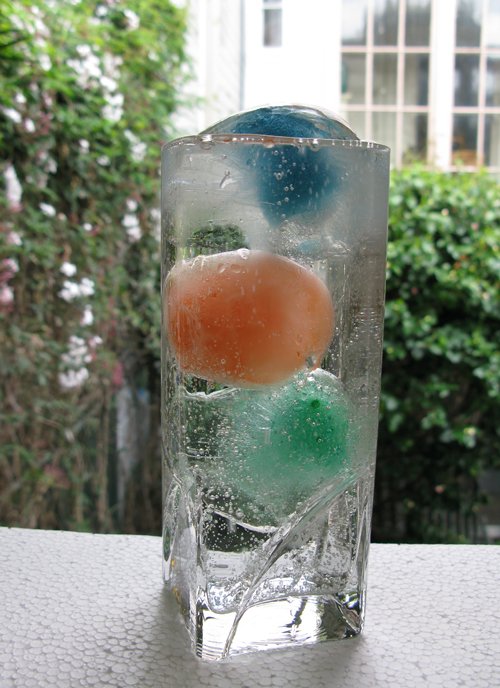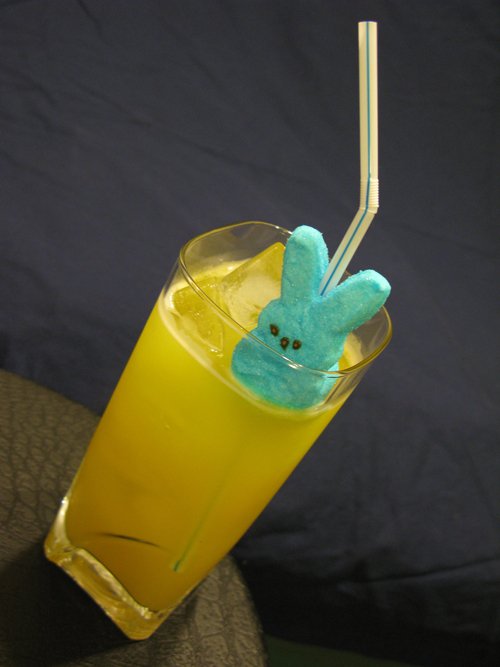After reading the detailed description of making the best aquafaba by Hannes Schmitt from Electric Eel on yesterday's post, I decided I wanted to try some experiments myself to see what makes the best, frothiest, least expensive, least smelly chick pea/garbanzo bean water frother.
Schmitt's method is to hydrate the chickpeas (discarding the water), then cook them (saving the water), then soak them again (keeping the water). You combine the water from the cooking and the soaking together. After my experiments, that looks to be a very good method.
In the first round of experiments I prepared 6 types of chick pea water and made the same drink with all of them:
- Chickpea Soaking Water: The water used to hydrate dried chickpeas. This was light in color.
- Cooking Water: The water used to boil chickpeas (about 90 minutes, probably too long). The resulting water the next day was super gloppy, nearly gelatinous. In the future I would boil the beans for less time.
- Second Cook Water: After cooking the beans, I boiled half of them for an additional 30 minutes and kept this water. This water was also gelatinous the next morning.
- Post-Cook Soak Water: The other half of the beans after cooking I left to soak with water overnight. This water was lighter in color, with more of a fresh bean aroma than cooked.
- Canned Chickpea Water (unsalted! make sure to buy unsalted): Traditional aquafaba from the can. Note that I had opened the can previously and transferred the water to another container. It seems to have lost most of the initial farty smell and smelled more like the flour.
- Boiled Chickpea Flour Water: I have some chickpea flour, which makes great froth if you add a small scoop in a cocktail, but all the solids settle out. By boiling the chickpea flour I was trying to isolate whatever it is in chickpeas that makes good foam. After boiling for about half an hour or so, I placed the water in a tall jug then the next morning poured off the top portion with less solids evident. It had a touch of bean smell but nothing dramatic.
I then made drinks with all these waters: 1 ounce vodka, 1/2 oz simple syrup, 1/2 ounce lemon juice, 1 ounce water (to mimic ice), and 1/2 ounce aquafaba.
In the first picture below, you can tell the relative colors of the bean waters. The cooking water was darkest, while the flour water was milky.
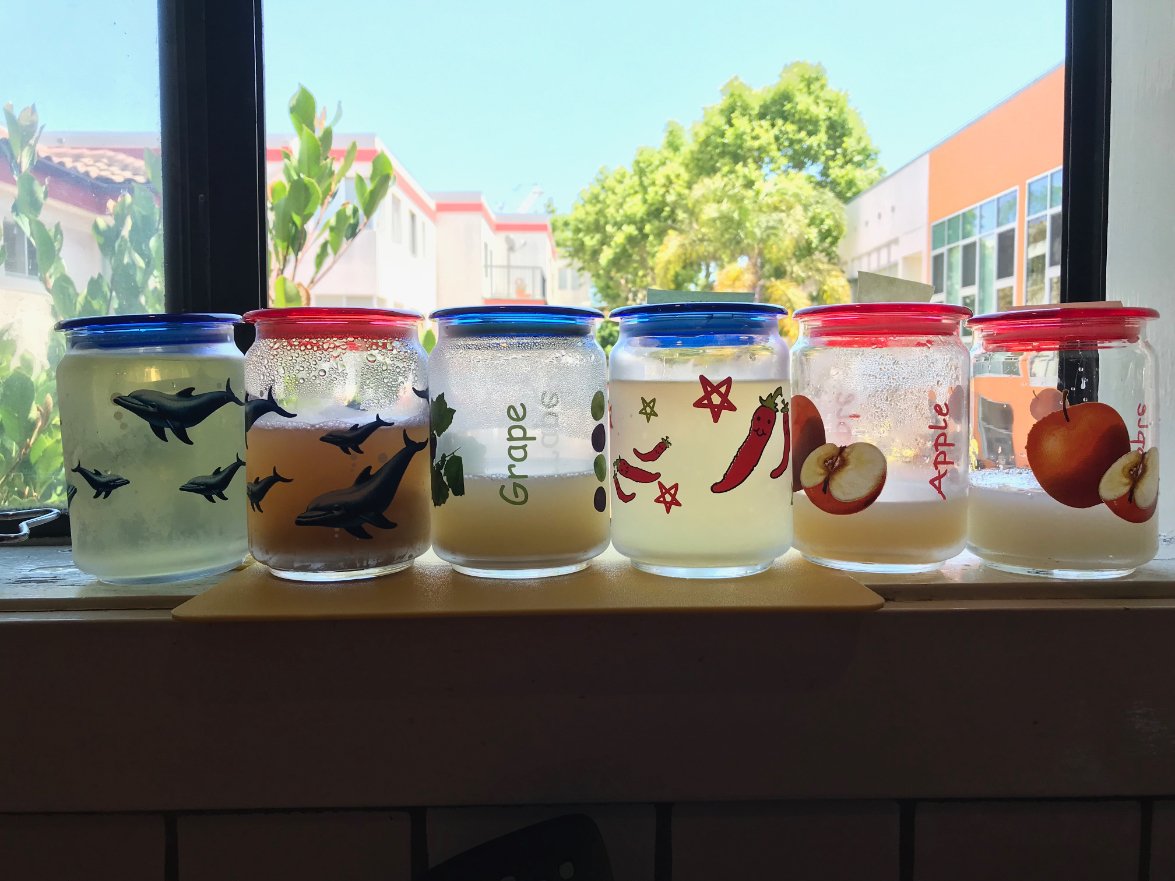
After shaking in a cocktail. (Number 5 had been freshly reshaken as I spilled some so it's a little more dramatic than in real life.) Note that the flour water #6 on the right has a greyish tint.
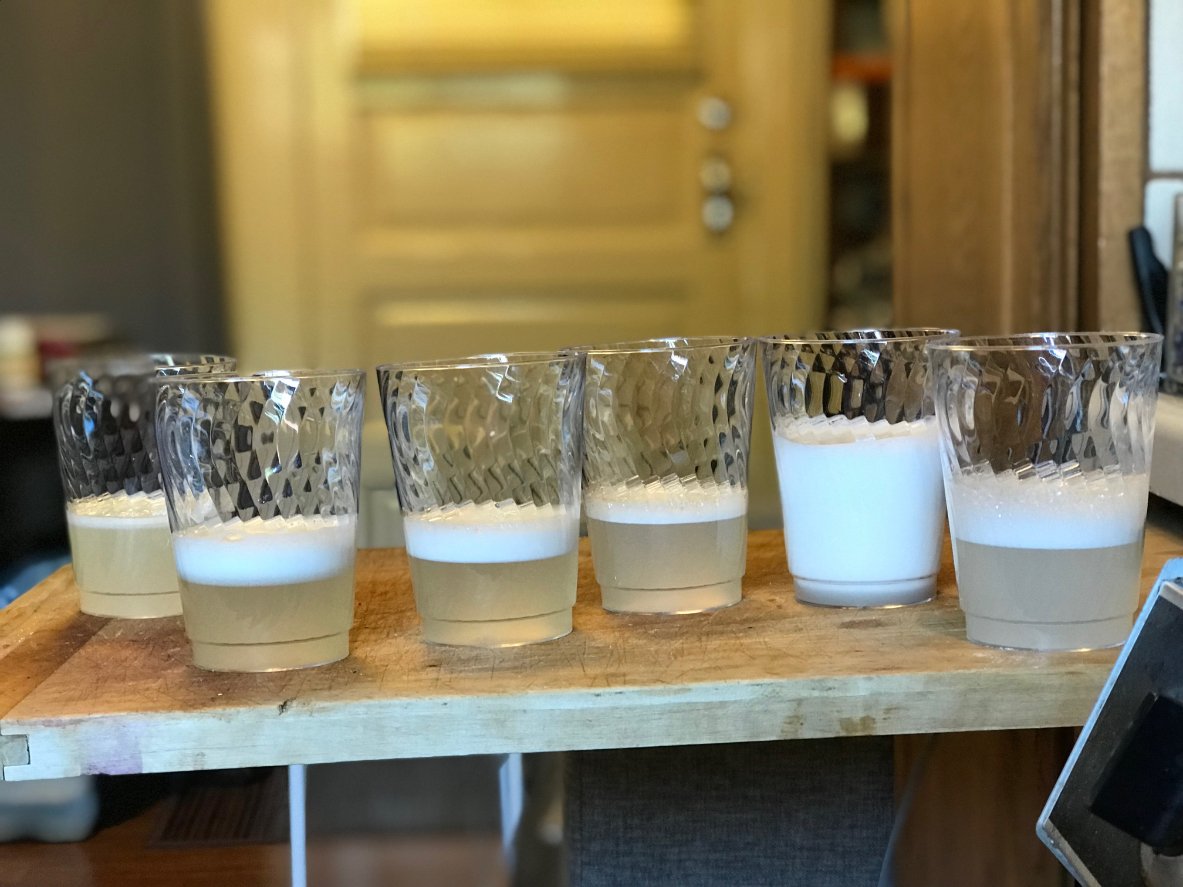
Results:
- #5 Canned Chickpea Water was the best, densest foam, by a lot. Note that in other experiments I determined the way to minimize the funky bean smell is to use as little of this as possible. I found that 1/2 teaspoon/barspoon is enough.
- #6 Boiled Chickpea Flour Water was second best. It had the airiest foam.
- #2 Cooking Water. This one had some smell but not too intense.
- Then #3 Second cook water, #4 Post-Cook Rinse water
- Then #1 the Soaking Water didn't do much at all.
It seems that Schmitt's method of adding #2 to #4 (cooking water to post-cook soaking water) would combine some very thick water with a lighter one that still has some foaming action to minimize color and aroma.
The second boil water did produce nice foam, though the beans were probably ruined for anything but hummus after that point. But it did make me think about boiling beans for a super long time with more water to see if that would effectively give us more bang for the buck.
This inspired another round of experiments for the next day (and next blog post): Comparing boiled flour vs unboiled, and seeing if I could boil a small amount of rehydrated chickpeas for a long time to get a good aquafaba.
Next Up: Aquafaba Experiments Round 2
and then Aquafaba Experiments Round 3
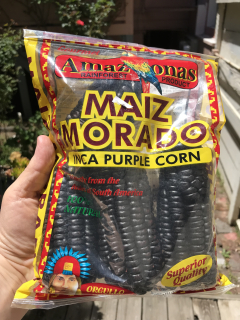 Anthocyanins are pigments that, depending on their pH, may appear red, purple, blue or black. Food plants rich in anthocyanins include the blueberry, raspberry, black rice, and black soybean, among many others that are red, blue, purple, or black. [wikipedia]
Anthocyanins are pigments that, depending on their pH, may appear red, purple, blue or black. Food plants rich in anthocyanins include the blueberry, raspberry, black rice, and black soybean, among many others that are red, blue, purple, or black. [wikipedia]